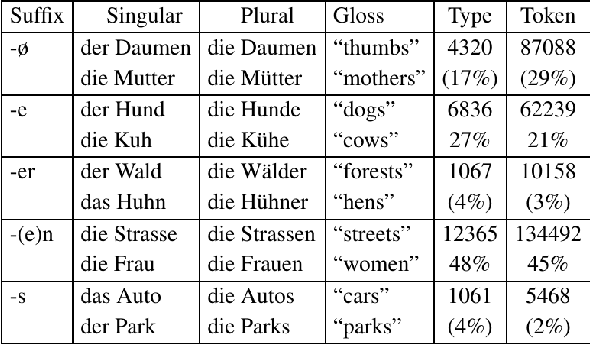Falling Through the Gaps: Neural Architectures as Models of Morphological Rule Learning
Paper and Code
May 08, 2021



Recent advances in neural architectures have revived the problem of morphological rule learning. We evaluate the Transformer as a model of morphological rule learning and compare it with Recurrent Neural Networks (RNN) on English, German, and Russian. We bring to the fore a hitherto overlooked problem, the morphological gaps, where the expected inflection of a word is missing. For example, 63 Russian verbs lack a first-person-singular present form such that one cannot comfortably say "*o\v{s}\v{c}u\v{s}\v{c}u" ("I feel"). Even English has gaps, such as the past participle of "stride": the function of morphological inflection can be partial. Both neural architectures produce inflections that ought to be missing. Analyses reveal that Transformers recapitulate the statistical distribution of inflections in the training data, similar to RNNs. Models' success on English and German is driven by the fact that rules in these languages can be identified with the majority forms, which is not universal.
 Add to Chrome
Add to Chrome Add to Firefox
Add to Firefox Add to Edge
Add to Edge